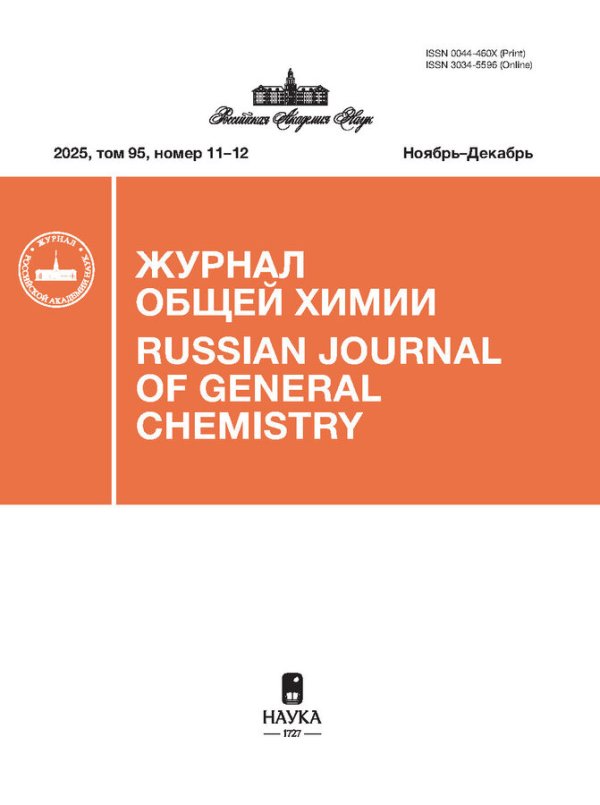Vol 93, No 7 (2023)
Articles
Functionalization of graphene fluoride with 2-phenylbenzimidazole
Abstract
 987-994
987-994


Synthesis of N-Substituted Morpholine C60-Fullerene Adducts in the Presence of LiOH and Lead(IV) Acetate
Abstract
 995-1000
995-1000


Synthesis of aromatic and heterocyclic fumaropimaric acid triamides
Abstract
 1001-1006
1001-1006


Mannich reaction involving 6-amino-4-methyl2-(thio)oxo-1,2-dihydropyridine-3,5-dicarbonitriles
Abstract
 1007-1022
1007-1022


Pyridine-containing benzocyclopentaquinolines and benzacridines and their quaternary salts
Abstract
 1023-1034
1023-1034


Synthesis of 5-[4-(arylsulfanyl)phenyl]-2,2′-bipyridines using aryne intermediates
Abstract
 1035-1042
1035-1042


Synthesis and antimicrobial activity of hexahydrochromeno[4,3-d]pyrimidine-2-thiones thiouronium salts
Abstract
 1043-1049
1043-1049


1,3-dipolar cycloaddition of stable azomethine ylide based on ninhydrin and l-proline to phosphorylated acetylenes
Abstract
 1050-1056
1050-1056


New bis-(N,N-diethylamino)(phenethyl)methylsilane and 1,2-bis-(N,N-diethylamino)-1,2-di(phenethyl)1,2-dimethyldisilane
Abstract
 1057-1060
1057-1060


Synthesis and extraction properties of tripodal tetraphosphoryl ligands on the triphenylphosphine oxide platform
Abstract
 1061-1069
1061-1069


Effect of n-acetylcysteine on cu2+(fe2+)/h2o2-mediated free radical fragmentation of glycerophosphate in the presence of biologically active compounds
Abstract
 1070-1080
1070-1080


Effect of amino acid fragments in tetraphenylporphin derivatives on the Ph-dominance interval of dication porphyrin
Abstract
 1081-1087
1081-1087


Application of silver(i) dicyano-[3-cyano-4-(4-dimethylaminophenyl)6-(2-hydroxyphenyl)pyridin-2-yl]methanide as a reagent for the quantitative determination of biothiols
Abstract
 1088-1097
1088-1097


Nucleophilic substitution in 4-bromo-5-nitrophthalodinitrile: XVIII. Synthesis and spectral properties of octasubstituted zinc phthhalocyanines with cyclohexylphenol moieties
Abstract
 1098-1107
1098-1107


Metal exchange kinetics of asymmetrically substituted cd(II)- tetraarylporphyrins with cobalt and zinc chlorides in dmf
Abstract
 1108-1113
1108-1113


5-(2-pyridyl)tetrabenzoporphyrin and its complexes with zinc, cobalt, copper and iron. synthesis, spectral, electrochemical and electrocatalytic properties
Abstract
 1114-1123
1114-1123


Synthesis and physicochemical properties of tin(IV), zirconium(IV), and hafnium(IV) 2(3),9(10),16(17),23(24)-tetrakis-(4-tritylphenoxy)phthhalocyaninates
Abstract
 1124-1131
1124-1131


Mn(II)-cu(I) hybrid complex based on 1,3,5-tris(diphenylphosphinyl)benzene
Abstract
 1132-1138
1132-1138


Iron-containing polyoxotungstophosphates and their thermolysis products
Abstract
 1139-1148
1139-1148












